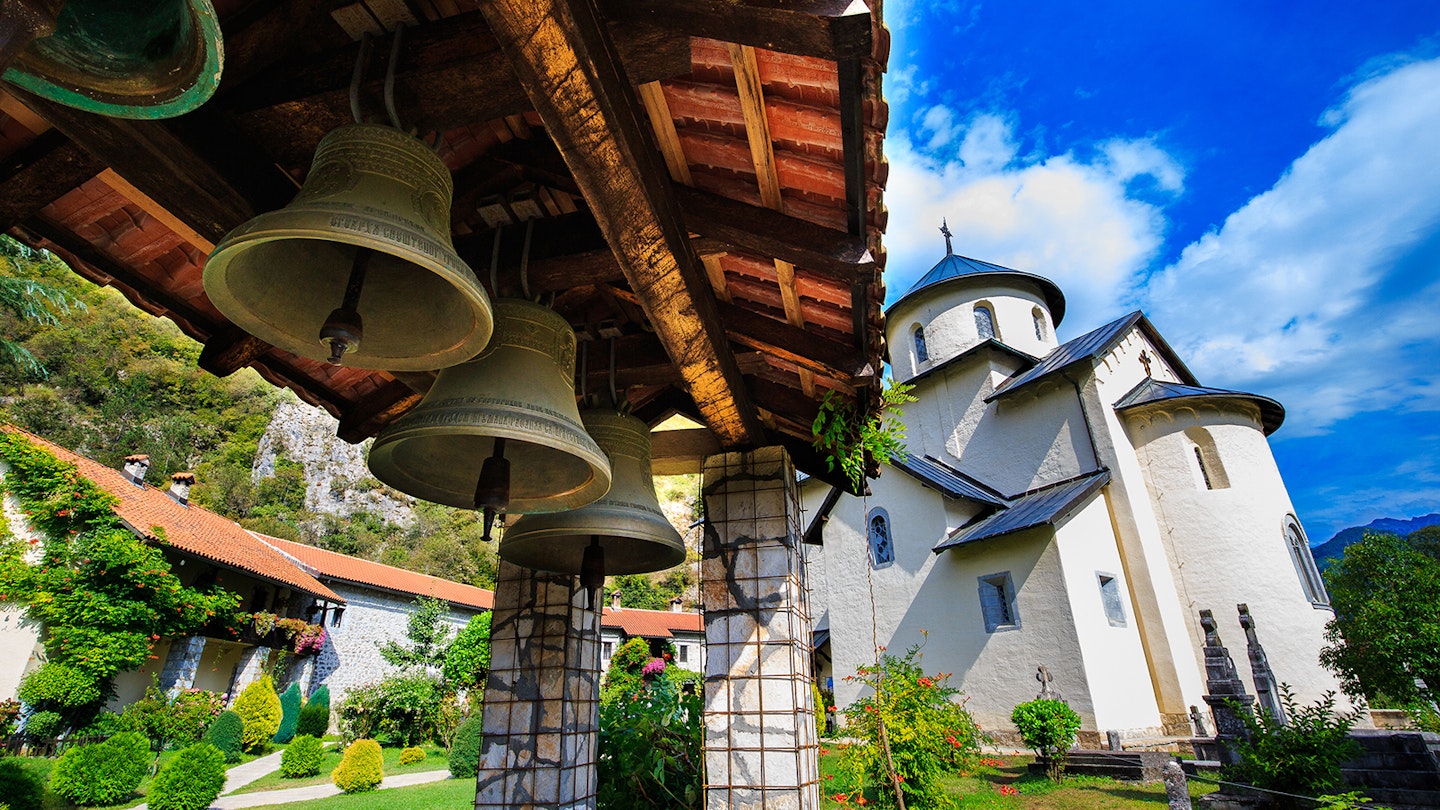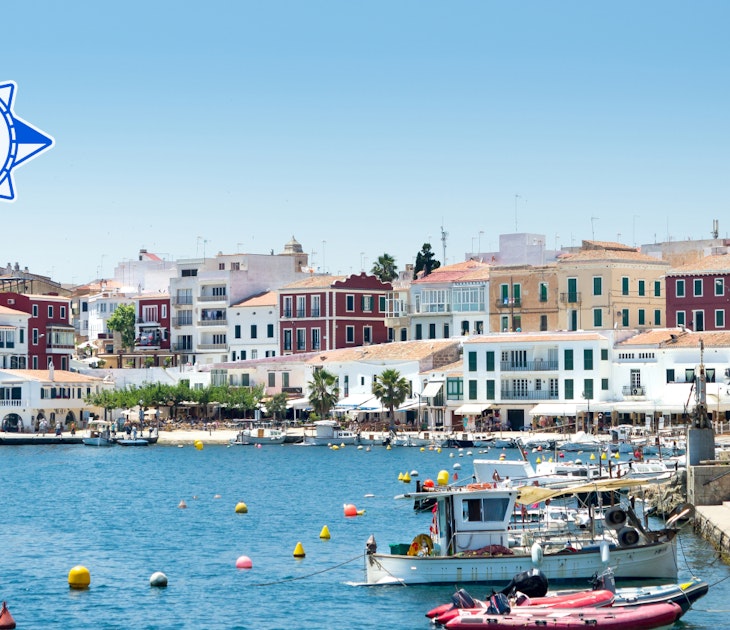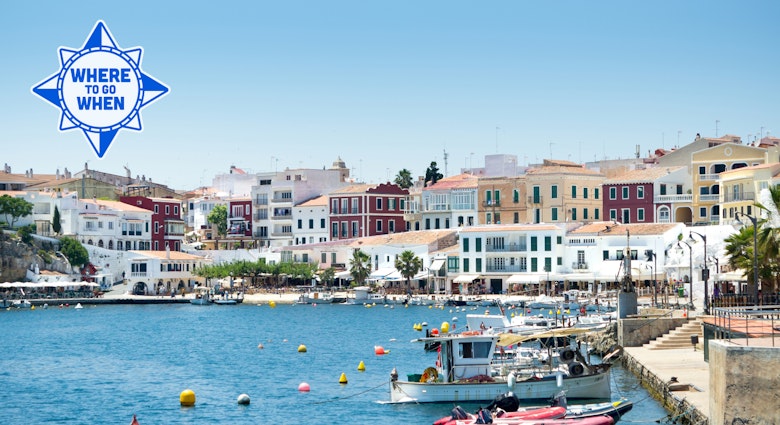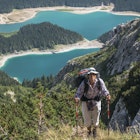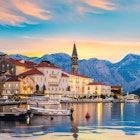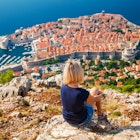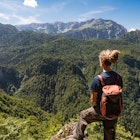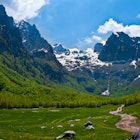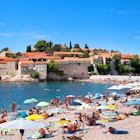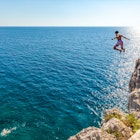Montenegro’s north beckons with countless highland adventures. Its great outdoors – encompassing Durmitor, Biogradska Gora and Prokletije national parks – are a dream destination for everything from hiking and mountain biking to canyoning and rafting.
But for those who prefer kicking back, this rugged region is also well worth exploring for its cultural and historical heritage, festive spirit, delicious natural produce and rural hospitality.

Cultural route
The heart of Montenegro’s northern mountains – the region of Bjelasica, Komovi and Prokletije – gets far fewer visitors than the rest of the country. An official cultural route (northernexposure.me), however, conveniently links its major towns, providing a rewarding insight into the rich heritage of places rarely featured on tourist brochures.
Only 25km from Kolašin ski resort (the jumping-off point for exploring Biogradska Gora national park and Bjelasica mountain), the mid-13th-century Morača Monastery is one of the country’s cultural highlights. Rising above the stunning canyon of the Morača river, it’s a tranquil place – and a welcome respite from a white-knuckle drive through the canyon – with resident monks tending beehives and vivid, allegorical frescoes painted centuries ago by some of the masters of Orthodox religious art. Bonus bibliophile points: the monastery’s treasury guards a rare copy of Oktoih (1493), the first Cyrillic book printed in a South Slavic language.

On the doorstep of both Biogradska Gora and Durmitor national parks – with attractive mountain biking and hiking routes snaking by – the town of Mojkovac was the scene of a famous (and fierce) WWI battle in which the underdog Montenegrin troops defeated the mighty Austro-Hungarian army. Not far from the battlefield where remains of the trenches can still be seen is the Memorial to the Heroes of the Battle of Mojkovac, the city’s symbol. Past warrior glories are a source of considerable pride in these parts, as you’re sure to find out if you chat to locals about the region’s deep-rooted code of čojstvo i junaštvo (humanity and bravery).
As the gateway to Prokletije national park, the small towns of Plav and Gusinje are distinguished by a bucolic setting and echoes of the Ottoman era. The former lies on the shores of the water-lily-strewn Lake Plav, while the latter is right by the karst springs of Ali Pasha in the foothills of the Accursed Mountains. Both towns are dotted with interesting mosques dating from various centuries.
In Plav, look out for the intricate arabesque of the Emperor’s Mosque and the cascading domes of the Sultan’s Mosque; in Gusinje, don’t miss the Vizier’s Mosque with its slender wooden minaret and porch. A unique example of Ottoman architecture in the region – as well as evidence of turbulent history – is the kula, a live-in defensive tower that protected families in times of siege. Particularly evocative of those bygone days is Plav’s 17th-century Redžepagića Kula, with two bottom floors of metre-thick stone walls, and a third, wooden floor with jutting balconies and rich woodcarvings.

Nothing makes a more fitting souvenir from Montenegro’s highlands than woollen handicrafts, and Bijelo Polje is the place to go for some excellent handmade products at Niti store (Nedeljka Merdovića bb). High-quality items made from sheep’s wool, with brightly coloured folksy designs, range from scarves to socks – so you can literally get wrapped up from head to toe.
You can also choose a rug, curtain or even a framed picture (made of wool by a special technique called suvo pustovanje) to decorate your home. The work of a local women’s cooperative intent on preserving the traditional techniques of weaving, knitting and embroidery, these beautiful handicrafts even caught the eye of the Prince of Wales and Duchess of Cornwall on their 2016 visit to Montenegro.
Festival calendar
From adrenaline-pumping outdoor adventures to foodie feasts and highland-style knees-ups, they sure know how to throw a party in Montenegro’s mountains.
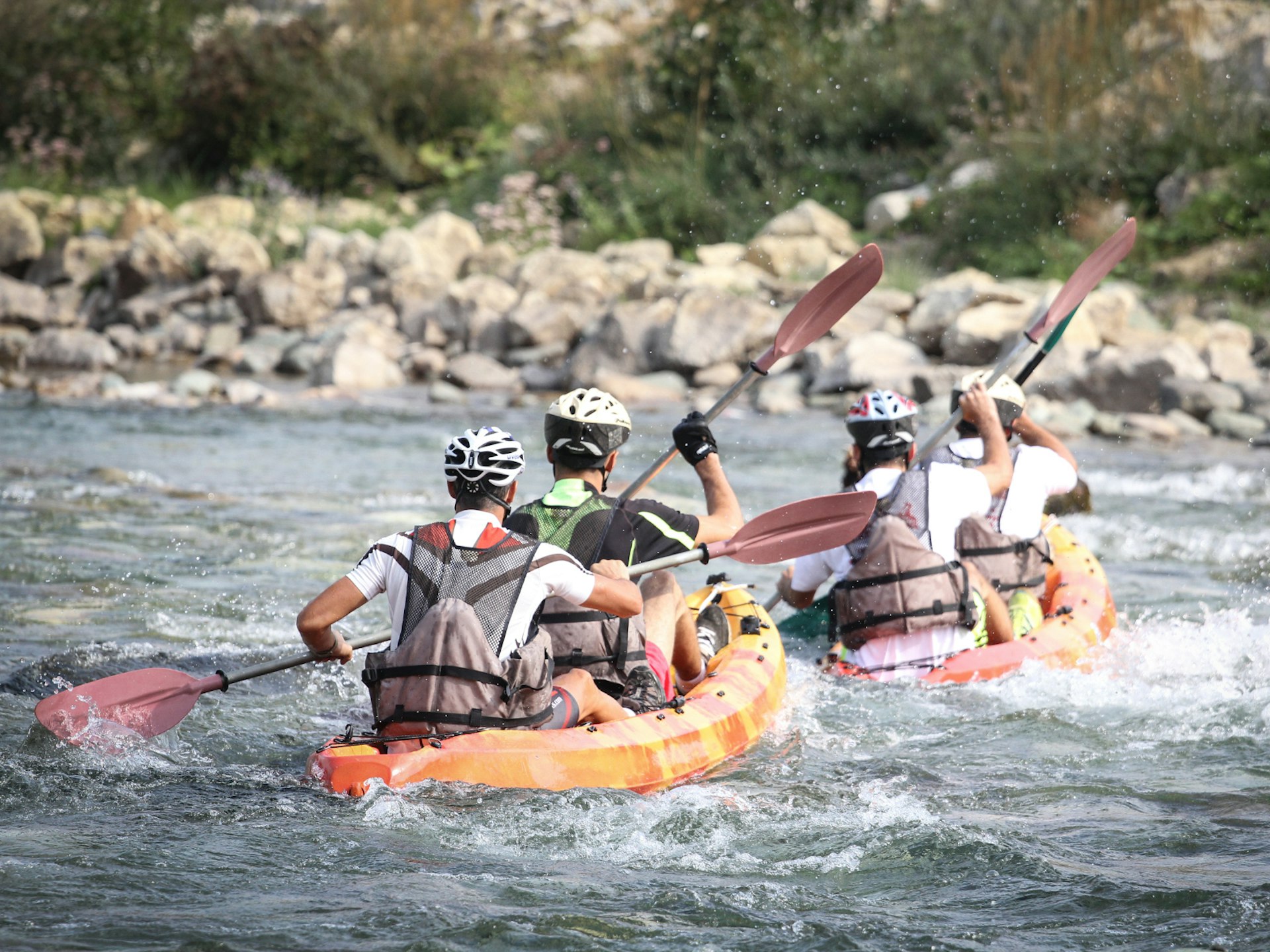
The region’s flagship event, which takes place at the beginning of September, is the aptly named Northern Challenge (mojkovac.travel). This increasingly popular adventure race starts in Mojkovac and has three super-scenic stages: a 12km kayaking lap down the Tara River to Kaludra, a 9km run/hike from Kaludra to Ružica Church on Sinjajevina mountain, and a 26km cycling stretch over mountain pastures and through beech forest back to Mojkovac. The event’s environmentally conscious approach is underlined by its organisers’ seven ‘leave no trace’ principles.
Bringing together rafting enthusiasts from across the Balkans since 2000, the merry Lim Regatta (toplav.me; held in late May or early June) covers a 134km-long route from Lake Plav via Andrijevica, Berane and Bijelo Polje, to Prijepolje across the border in Serbia. The three-day raft fest takes approximately 20 hours; its highlight is navigating the Lim River’s green depths and Grade 4 rapids past the 400m-high cliffs of the Tifran gorge.

For something completely different, August’s multi-day Summer Tango Camp (summertangocamp.com) takes tango, modern ballet and yoga to another level, mixing it all up with outdoor mountain activities in and around Kolašin. Meanwhile, Tamburaši Festival (tobijelopolje.me) enlivens Bijelo Polje over a few days in July, as folk groups show off their skills with the fiddle, guitar, accordion and tambura (similar to lute or mandolin) playing a fun range of traditional tunes.
Blueberries blanket the landscape of the Prokletije region – said to be the largest natural plantation of blueberries in the world – and Plav’s Days of Blueberries in late July are a veritable forest-fruit feast of the sweet stuff, wine and much more. Similarly, October’s Days of Pljevlja Cheese are the perfect excuse to indulge in Pljevlja’s famous soft white salted cheese (the first in Montenegro with a branded label of origin) and other delicious dairy produce. Hearty food and outdoor activities are also part of July festivities known as the Days of Mountain Flowers in celebration of the rich alpine flora of the Durmitor region.

Rural tourism
Northern Montenegro’s burgeoning agritourism is a great opportunity to experience the country’s old-world lifestyle. Staying with local families in rural ambience, you’ll be treated to garden-to-table cuisine based on fresh, organic produce. Or you can go straight to the source and try your hand at milking cows, foraging for forest fruits and mushrooms, making beehives or ‘baking’ rakija (brandy).
The century-old Kljajić household (northernexposure.me) in Lubnice near Berane offers immersion in authentic mountain-village life. Packed with rustic wooden furniture (the owner is a carpenter) and quaint decorations, the house itself is a mini ethnographic museum. With a family tradition of beekeeping and around a hundred beehives, the hosts’ organic honey with dried fruits and medovača (brandy made with honey) are a must-try.
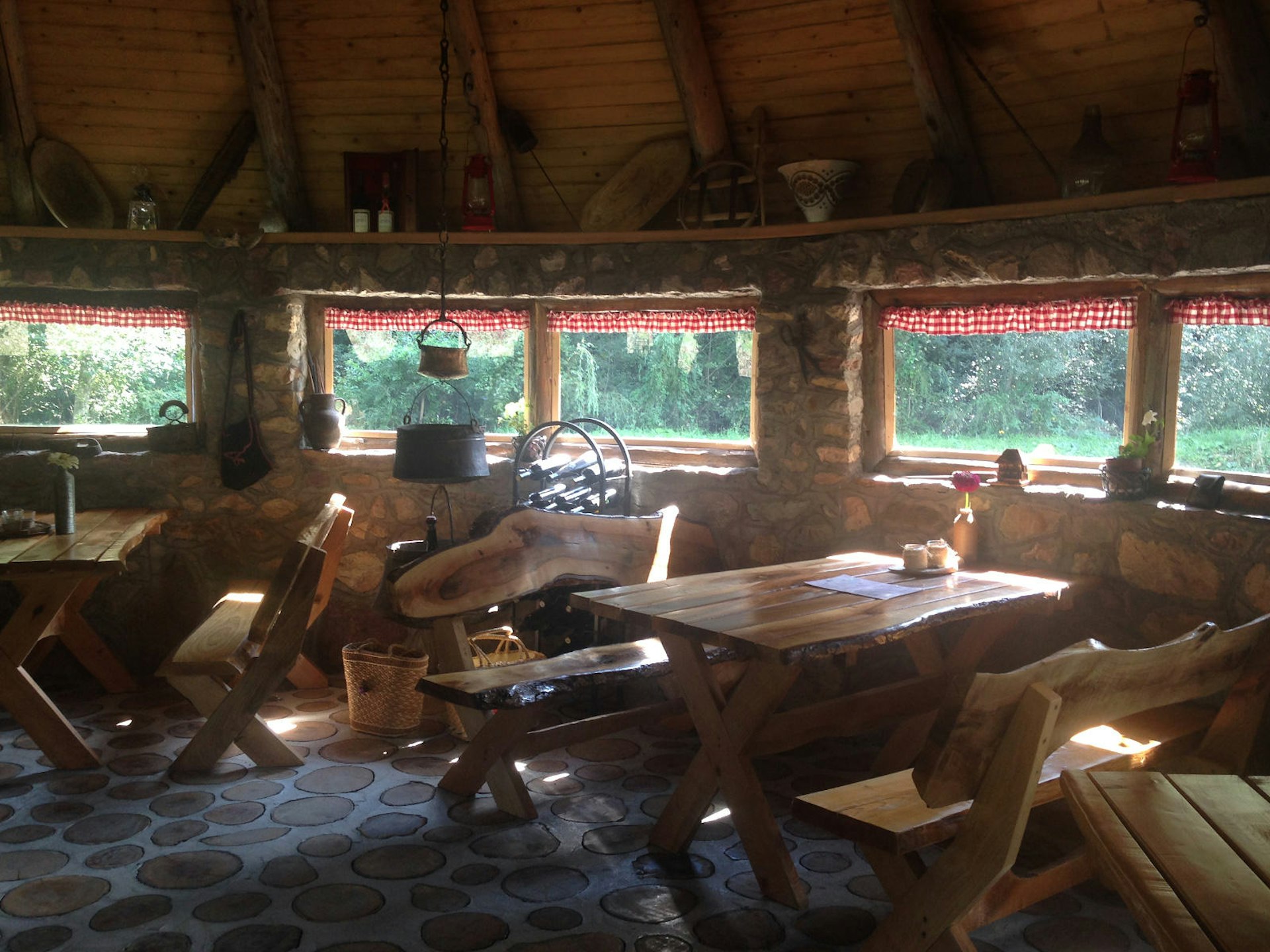
Nearby Tri Izvora household (obradovicslavko.berane@gmail.com) in a lovely secluded location above three springs – think waking up to birdsong and pristine mountain views – is a comfortable rural retreat with modern amenities. It’s surrounded by an orchard of a thousand apple, pear and plum trees as well as currant and chokeberry shrubs, meaning delectable fruit juices, jams and pies feature among other traditional home-cooked dishes.
A relative newcomer, Dubirog Perović restaurant (dubirogperovic@gmail.com) in Kralje village, off Berane–Andrijevica road – with camping available on the grounds and other accommodation in the works – draws locals and passing travellers alike for its fish specialities and original atmosphere. Built in highland dubirog (haystack-shaped wooden hut) style, the restaurant has its own trout-breeding pond; naturally, fresh pastrmka (trout) and riblja čorba (fish soup) are the highlights of the menu.
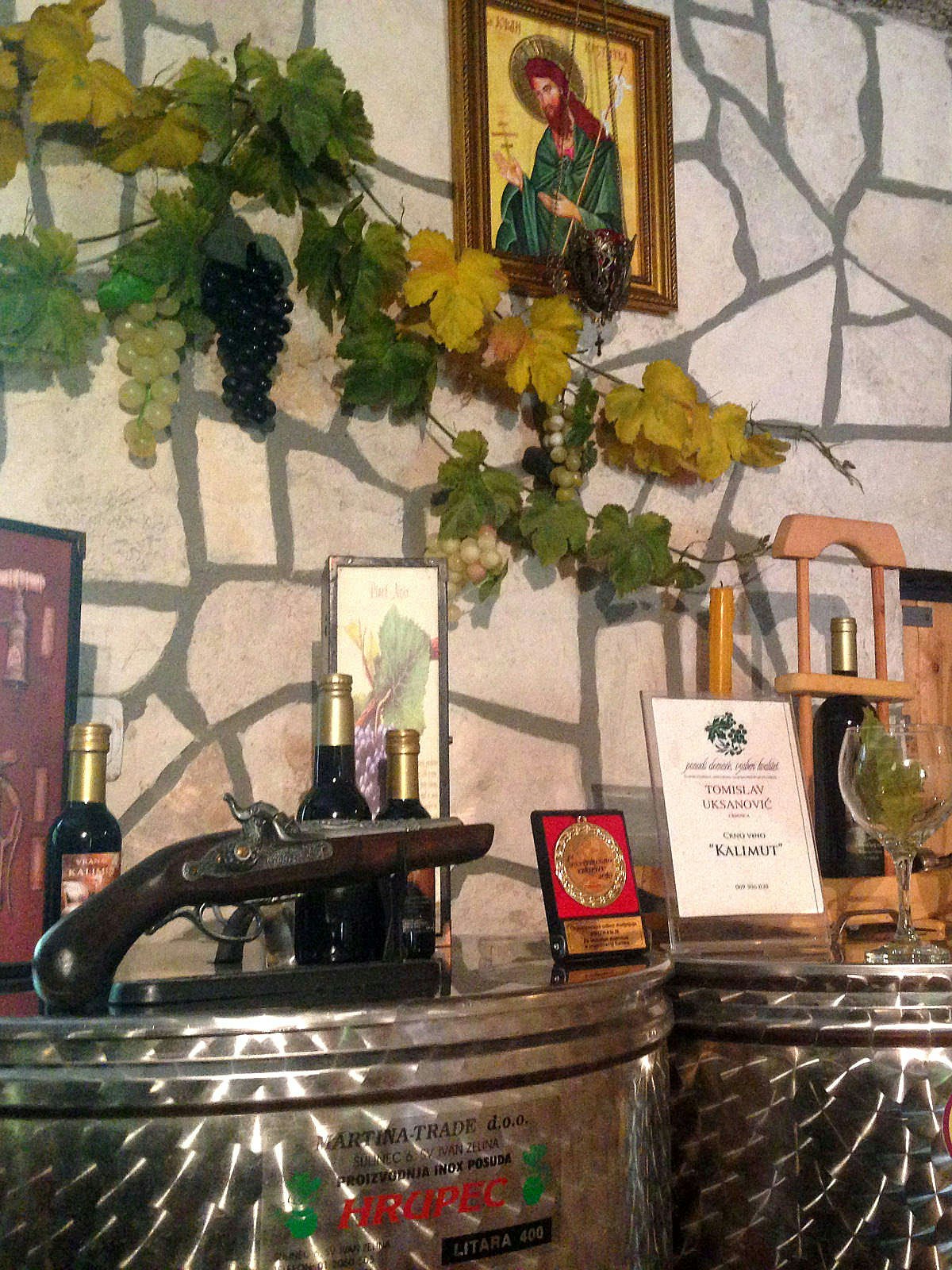
While the mountainous north isn’t wine-growing country, a quick trip down south to dreamy Lake Skadar national park leads you to Vinarija Ukšanović (tomouksanovic@gmail.com) in Boljevići village near Virpazar. This small family-run vineyard and tasting cellar is in Crmnica wine region, which boasts five autochtonous wine sorts. Ukšanović winery produces its own rose, Lisičina, as well as Montenegro’s most famous red, Vranac (both dry and semi-sweet). In true local fashion, the tasting starts with rakija – try loza s pelinom (grape with wormwood) – and finishes with a range of homemade fruit liqueurs.
Brana travelled to northern Montenegro with support from Rams Travel (ramstravel.co.me) and the Regional development agency for Bjelasica, Komovi and Prokletije (bjelasica-komovi.me). Lonely Planet contributors do not accept freebies in exchange for positive coverage.
